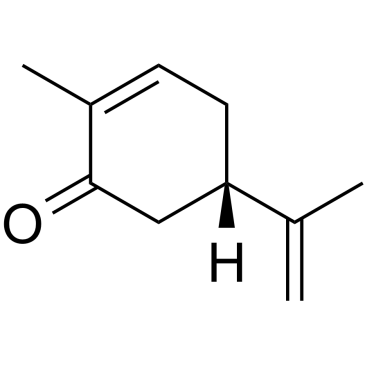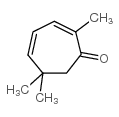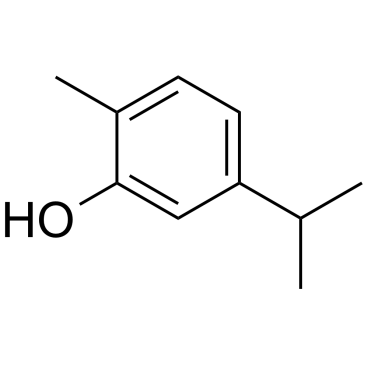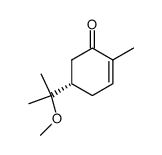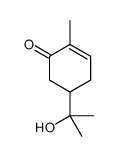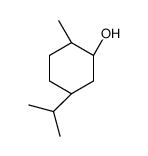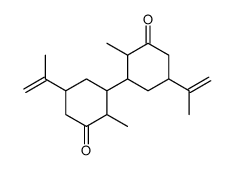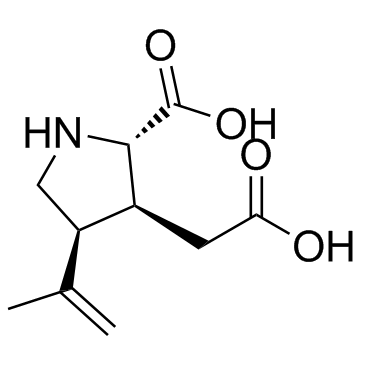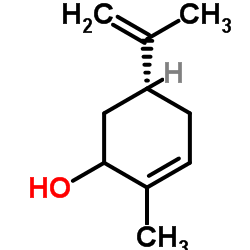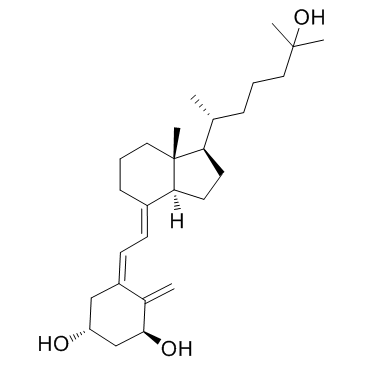2244-16-8
| Name | (+)-carvone |
|---|---|
| Synonyms |
d-(+)-carvone
D(+)-Carvone (S)-(+)-p-Mentha-6,8-dien-2-one (5S)-5-Isopropenyl-2-methylcyclohex-2-en-1-one (+)-carvone D(+)-Carvone,synthetic (S)-2-Methyl-5-(prop-1-en-2-yl)cyclohex-2-enone (+)-Carvone,(S)-5-Isopropenyl-2-methyl-2-cyclohexenone,p-Mentha-6,8-dien-2-one MFCD00062997 (+)-Carvone,(S)-(+)-Carvone,(S)-5-Isopropenyl-2-methyl-2-cyclohexenone,p-Mentha-6,8-dien-2-one (S)-2-methyl-5-(1-methylethenyl)-2-cyclohexene-1-one (S)-5-Isopropenyl-2-methyl-2-cyclohexenone (S)-(+)-Carvone (5S)-2-Méthyl-5-(1-propèn-2-yl)-2-cyclohexén-1-one (5S)-2-Methyl-5-(prop-1-en-2-yl)cyclohex-2-en-1-one p-Mentha-6,8-dien-2-one D-carvone S-(+)-Carvone (S)-carvone (5S)-5-Isopropenyl-2-methyl-2-cyclohexen-1-one EINECS 218-827-2 (5S)-2-methyl-5-prop-1-en-2-ylcyclohex-2-en-1-one Carvol |
| Description | (S)-(+)-Carvone (D Carvone) is a naturally occuring conmpound found in several food items and can be used in flavouring foods[1]. |
|---|---|
| Related Catalog | |
| References |
| Density | 0.9±0.1 g/cm3 |
|---|---|
| Boiling Point | 230.5±35.0 °C at 760 mmHg |
| Melting Point | 88.9ºC |
| Molecular Formula | C10H14O |
| Molecular Weight | 150.218 |
| Flash Point | 88.9±0.0 °C |
| Exact Mass | 150.104462 |
| PSA | 17.07000 |
| LogP | 2.27 |
| Vapour Pressure | 0.1±0.5 mmHg at 25°C |
| Index of Refraction | 1.481 |
CHEMICAL IDENTIFICATION
HEALTH HAZARD DATAACUTE TOXICITY DATA
MUTATION DATA
|
| Personal Protective Equipment | Eyeshields;Gloves |
|---|---|
| Hazard Codes | Xi: Irritant; |
| Risk Phrases | R22 |
| Safety Phrases | S24/25 |
| RIDADR | UN 2810 |
| WGK Germany | 1 |
| RTECS | OS8670000 |
| Packaging Group | II |
| Hazard Class | 6.1(a) |
| HS Code | 29142900 |
| Precursor 0 | |
|---|---|
| DownStream 10 | |
| HS Code | 2914299000 |
|---|---|
| Summary | 2914299000. other cyclanic, cyclenic or cyclotherpenic ketones without other oxygen function. VAT:17.0%. Tax rebate rate:13.0%. . MFN tariff:5.5%. General tariff:30.0% |
